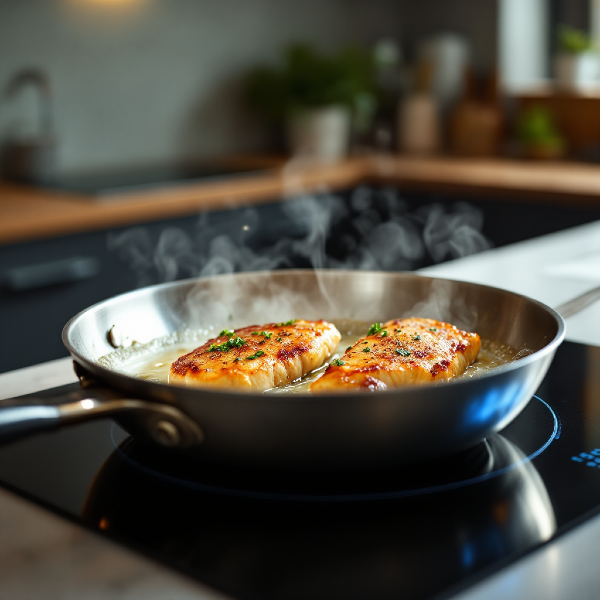Cooking with magnets: I bought two induction cooktops so you don't have to
My honest reviews of two portable induction cooktops, complete with teardowns, power measurements, and the truth about those 9-inch coil claims. Spoiler: They're not 9 inches.
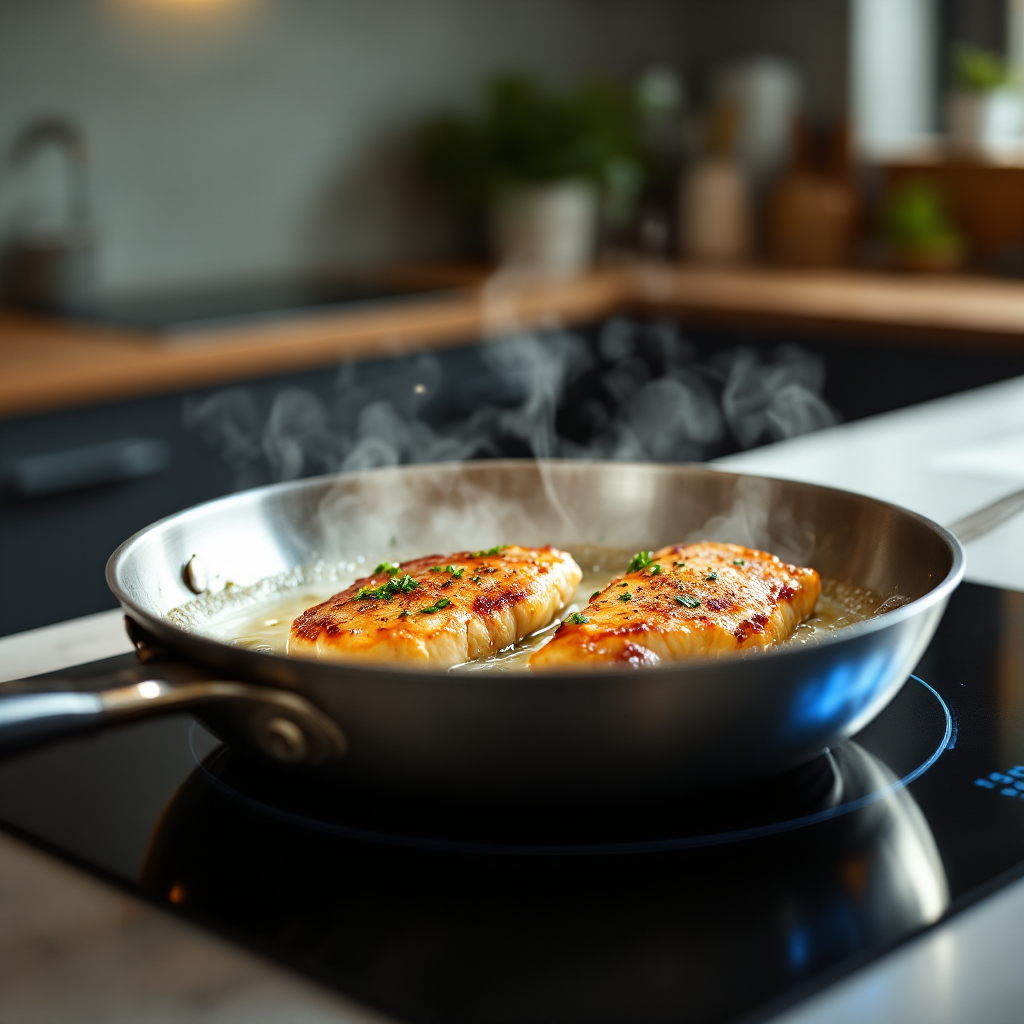
The kitchen is where science, technology, and passion collide—part lab, part workshop, part playground. Ingredients are left to mellow, reactions are coaxed with just the right amount of energy, and in the end, something greater than the sum of its parts emerges: a creation that satisfies both curiosity and appetite.
My journey with induction cooking began with a simple goal: find a portable cooktop with a genuinely large heating element. Anyone who's worked with big pots or pans knows the frustration of uneven heating—hot spots in the center, tepid edges, and the constant need to stir and redistribute. The physics should be straightforward: larger coil equals more even heat distribution. So, the few 9 inch coil options are where I set my sights, they should be much better than the typical 6-7 inch offering, right? The price point positions products of this size as a premium option, which I was willing to pay for superior performance. But as we'll see, marketing claims and engineering reality don't always align.
This is the second part in my induction burner series, learn more about induction burners and how I got to this point in my first post.
Digging through product listings
Identifying the cooktops that actually had 9 inch burners ended up being a little more challenging than expected. I sifted through dozens of listings including the sponsored results, those claiming to have larger coils but not actually once you got into the space, and those that were just blatantly misrepresenting themselves as called out in the reviews.
In the end, there were four options but really only two models since they clearly came off the same production lines but with just different made up brand names. I settled on the less expensive, “consumer grade” induction cooktop which was sold as the GastroGear B0DHY9NTNB and Abangdun B0C4L5GJJK (I’m sticking with the ASIN since the sellers didn’t bother coming up with names/model numbers). I reached out to both sellers with a few questions, primarily about the differences between the “consumer” and “commercial” products.
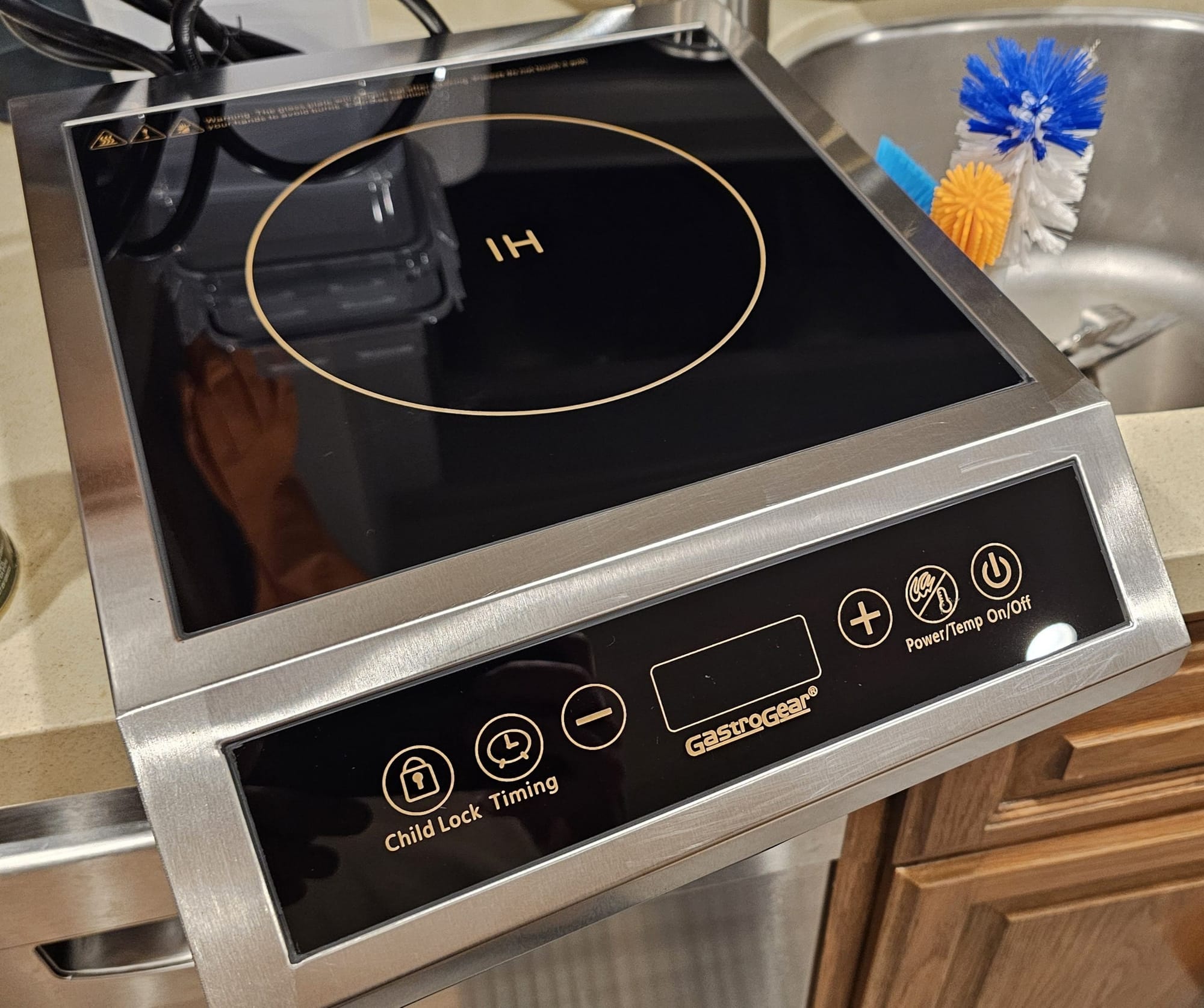
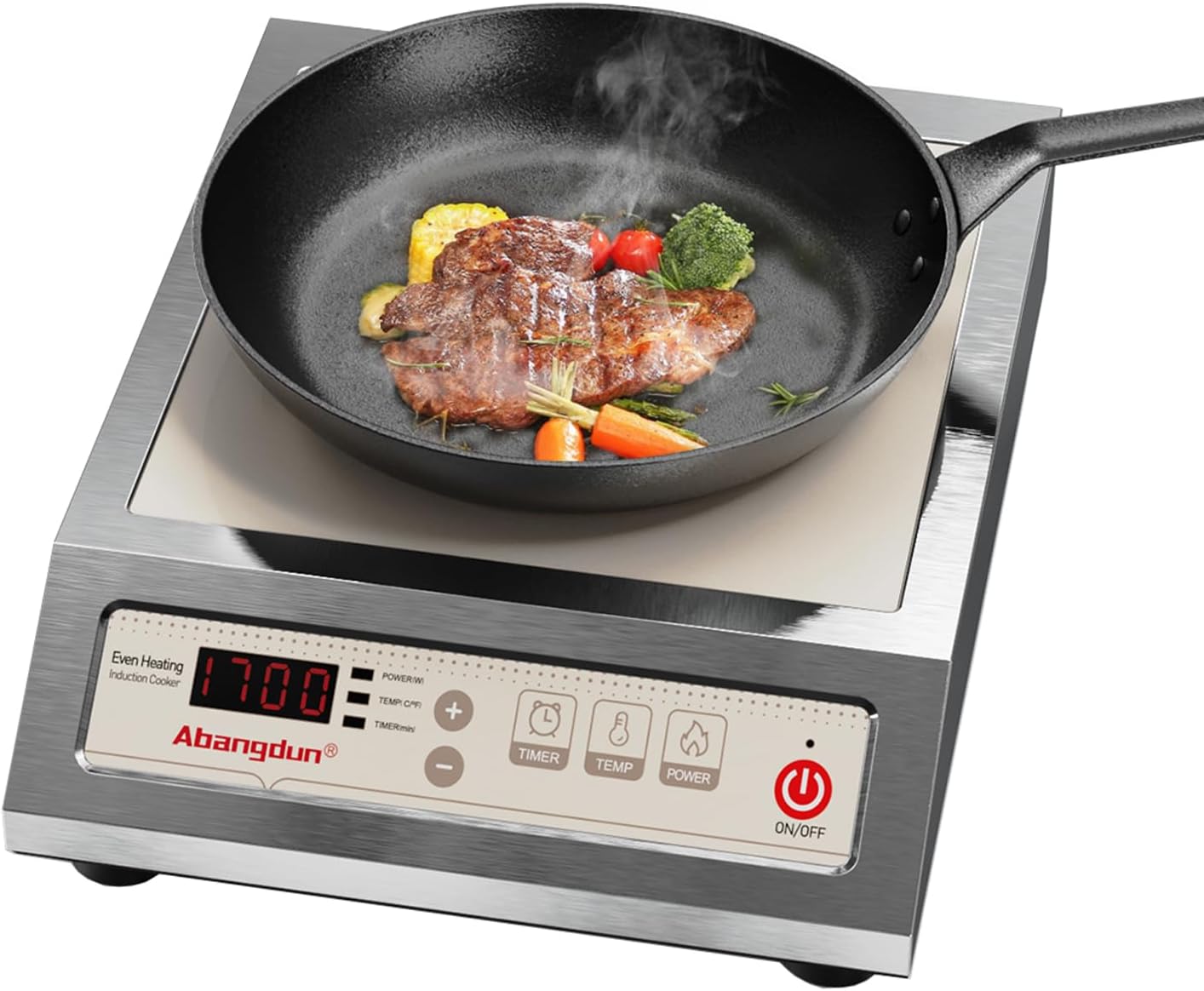
Pre-purchase communication with the GastroGear seller was refreshingly responsive. They answered my questions promptly and confidently affirmed the 9-inch coil size specification. In retrospect, they were likely just reciting from marketing materials without verifying the actual product - a common issue with white-labeled products being rebadged across multiple brands. I voted GastroGear with my wallet based on communication and the coupon they were offering at that time.
What actually worked
To give credit where it's due, the cooktop did offer some legitimate advantages:
- Larger than standard coil: While not the advertised 9 inches, the actual coil measured just over 8 inches (8.125" to be precise)—still larger than most competitors.
- Stable lower power settings: Unlike cheaper induction units that cycle on and off at lower settings (creating inconsistent heat), this unit maintained steady output at lower power levels - crucial for delicate cooking tasks.
- Coil windings support smaller cookware: The coil windings are significantly tighter near the center of the cooktop indicating a greater concentration of power output to maximize energy transfer to smaller cookware.
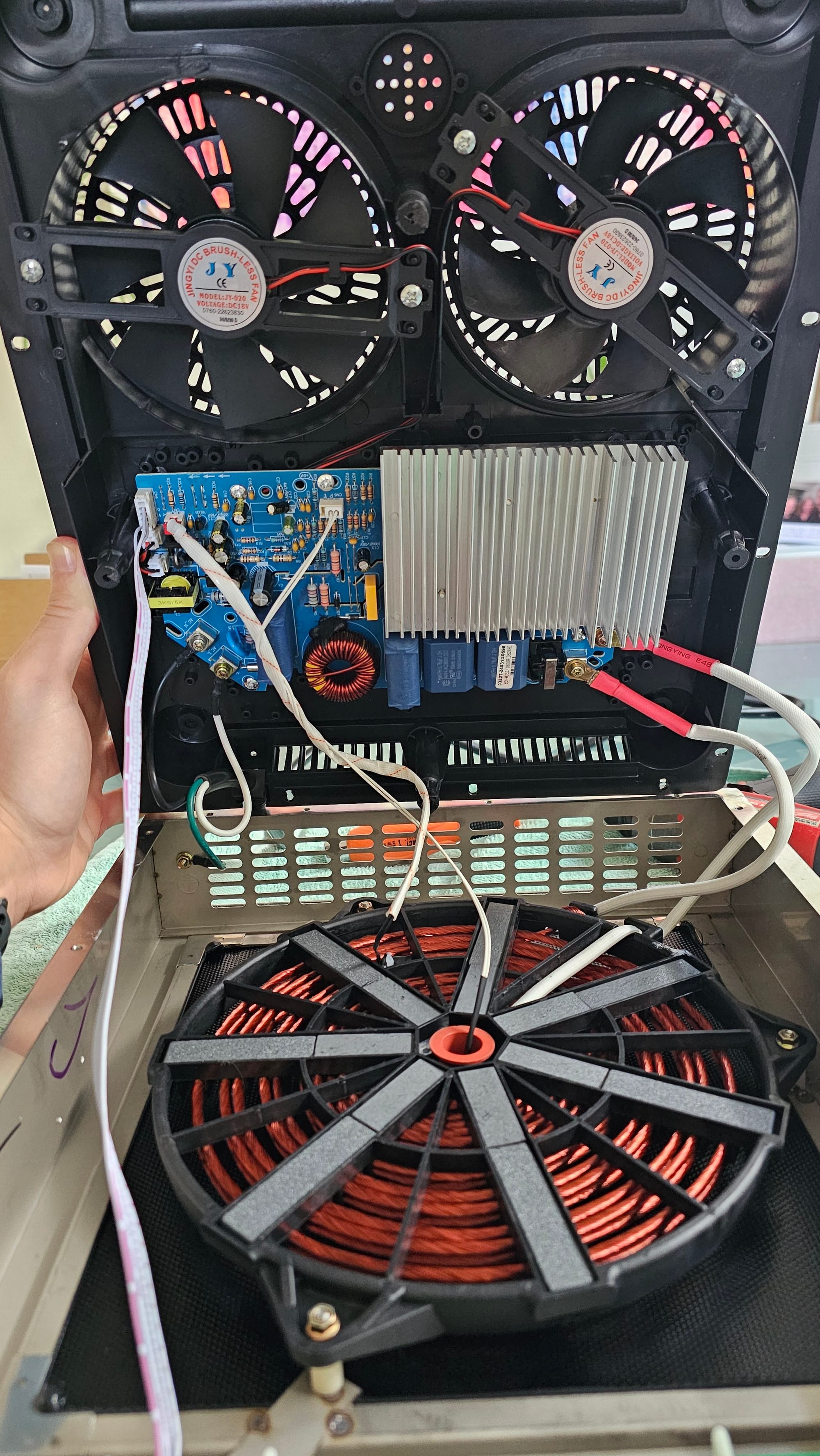
The engineering shortcomings
My disappointment centered around several significant technical issues:
- Misrepresented coil size: The ~8.125" coil fell nearly an inch short of the advertised 9" diameter. I even observed a 1.75cm gap between the coil and glass edge - the greater the distance between the coil and the cookware, the less efficient the energy transfer. Perhaps this gap was left to help keep the coil cool so it wouldn't absorb heat directly from the cookware through the glass surface.
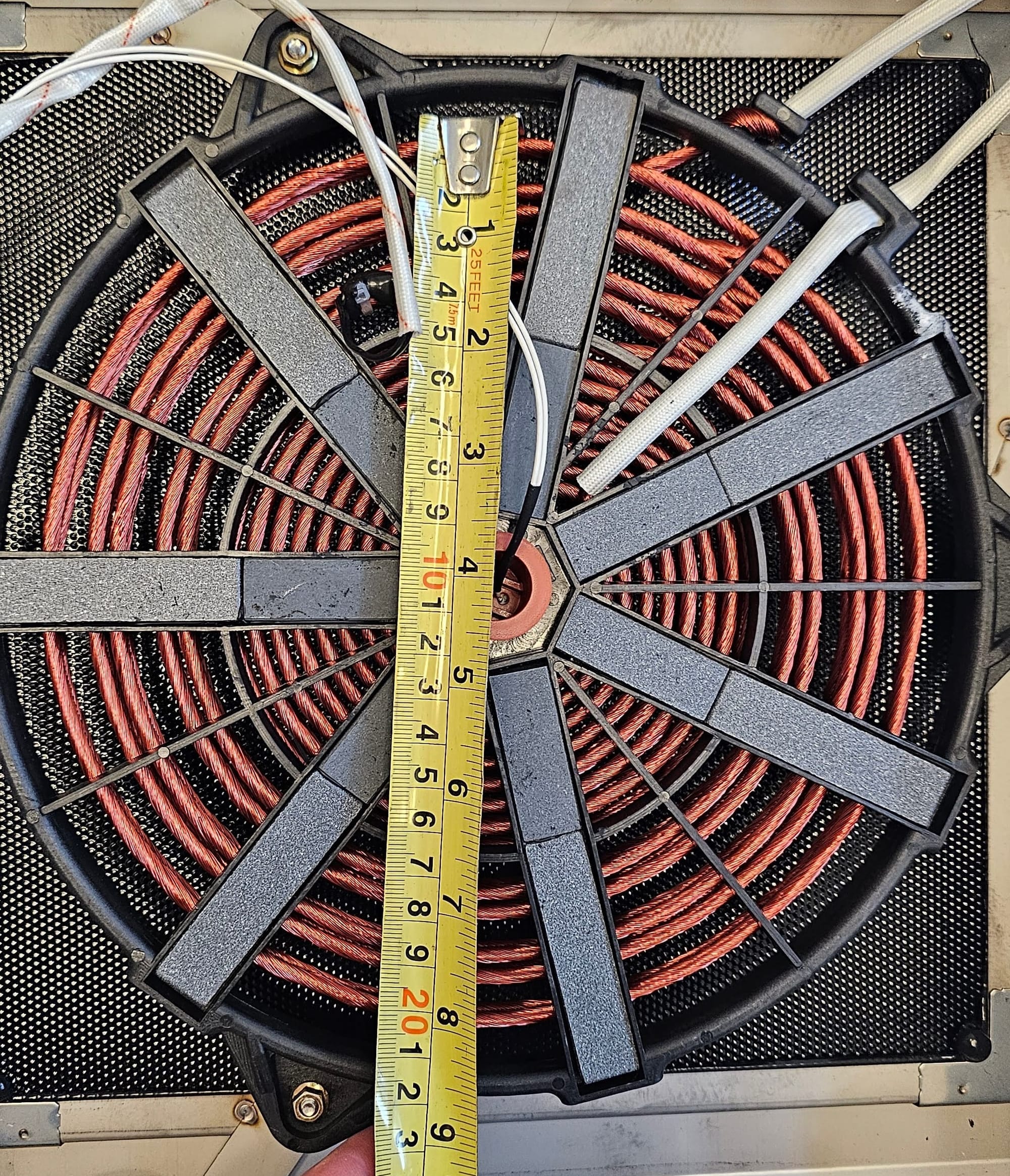
- Power draw discrepancy: Using two different power meters to verify accuracy, I consistently observed the unit drawing an average of 250W less than displayed. Further, while showing 1800W on its display, it maxed out around 1500W in actual draw. Interestingly, lifting the cookware slightly off the surface caused power draw to jump to the low 1700s—indicating the unit was capable of drawing more power but deliberately limited during normal operation.
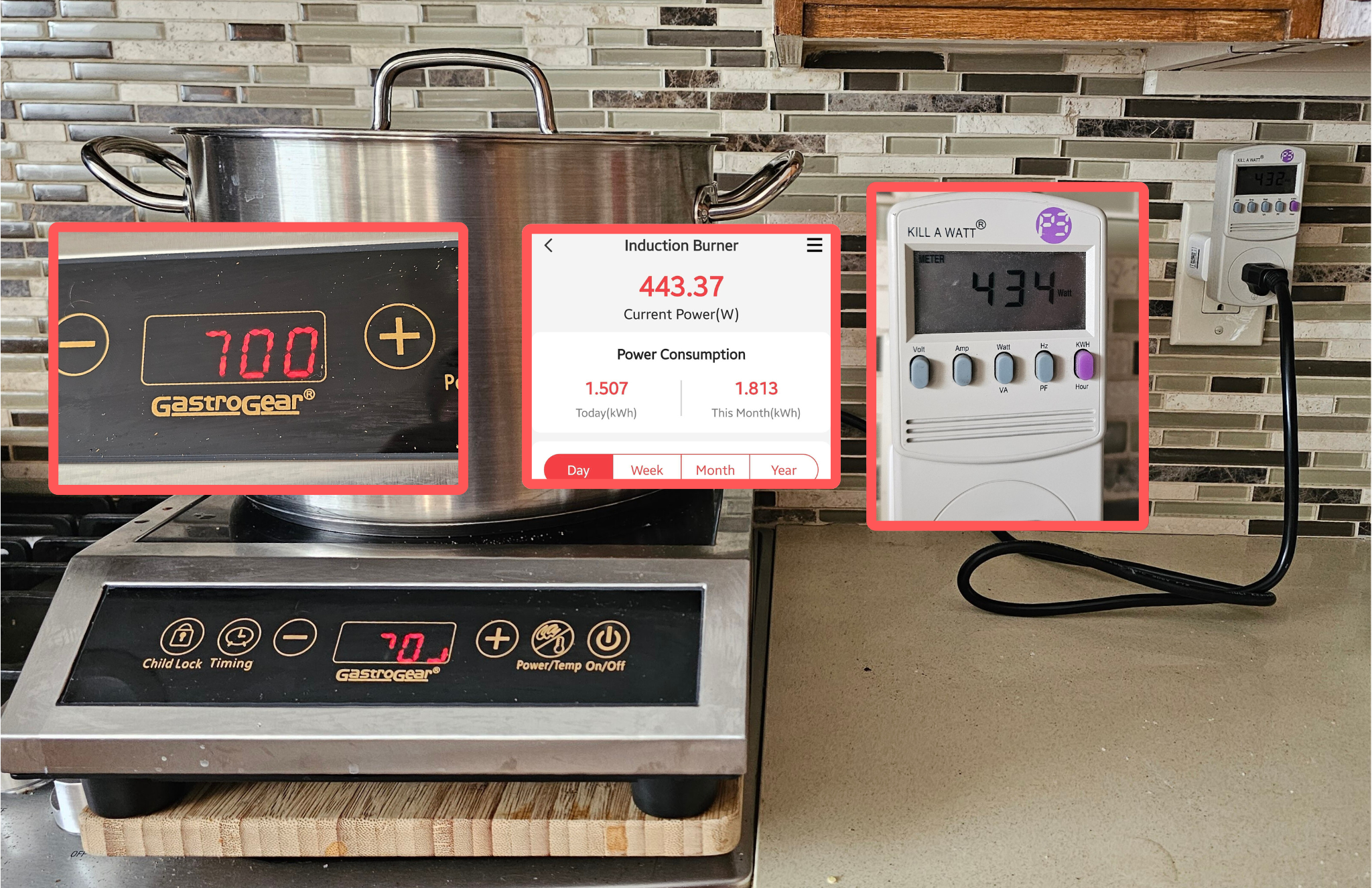
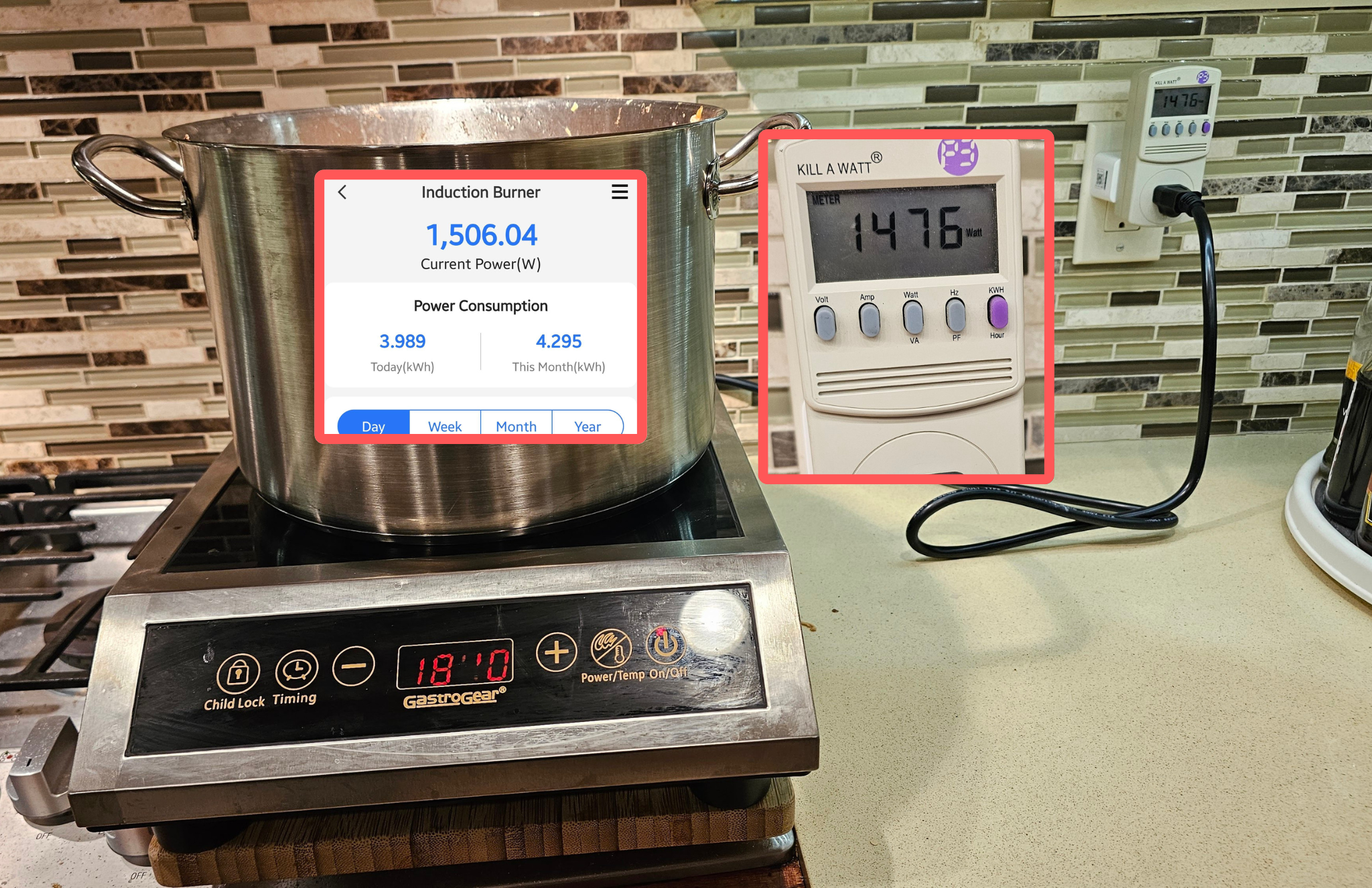
- Temperature sensor failure: Curiosity led me to disassemble the unit (voiding any warranty, but worth it for understanding the engineering). The temperature sensor, which should be thermally coupled to the cooking surface, was completely detached - the thermal compound had dried up and flaked off entirely. After reapplying fresh thermal compound and reassembling, the temperature control function still operated via what appeared to be a simple lookup table rather than actual temperature feedback.
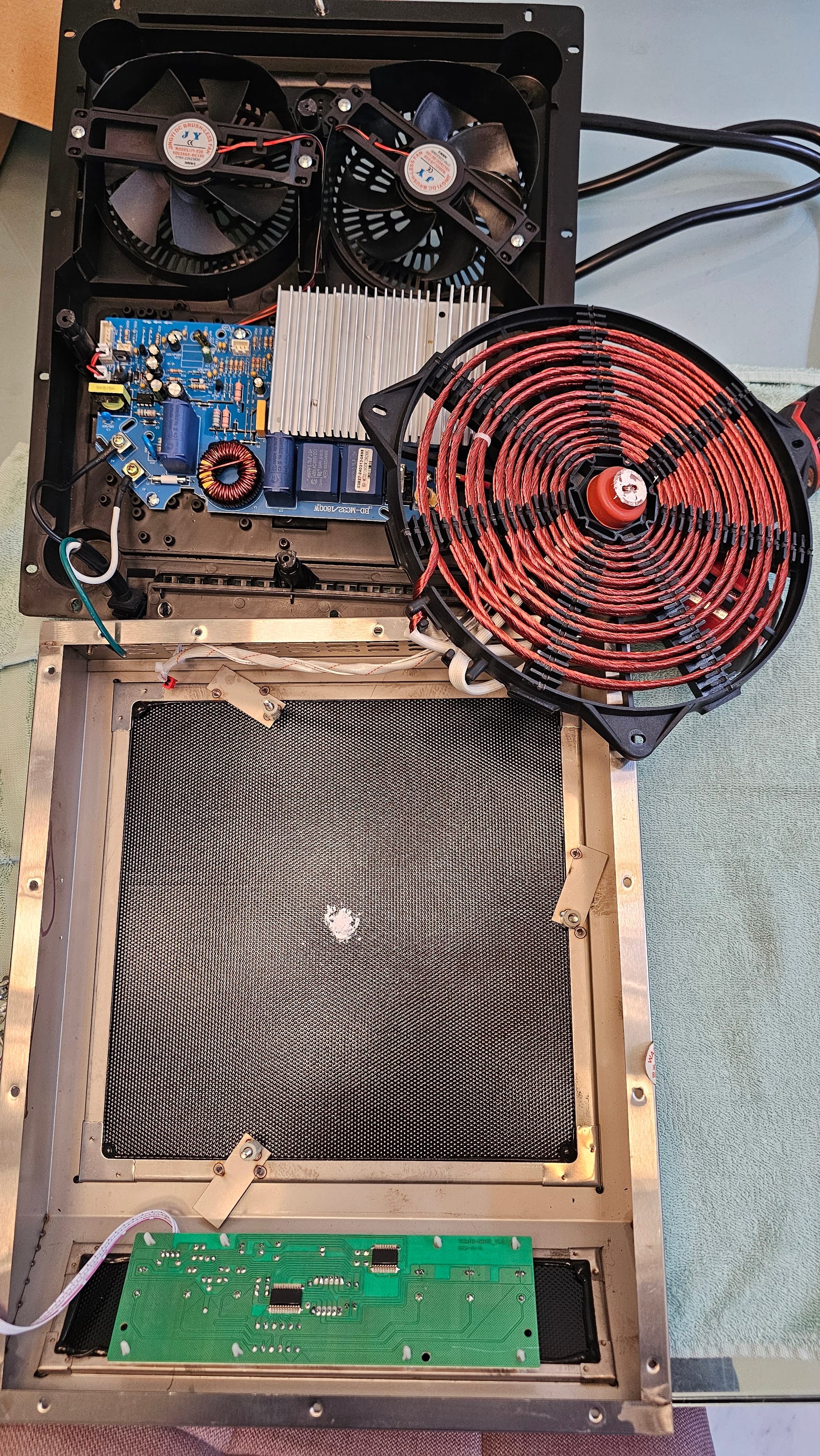
The user experience issues
Beyond the technical shortcomings, several design decisions created a frustrating user experience:
- Industrial-Grade Fan Noise: The cooling fans produced noise levels more appropriate for a commercial kitchen than a home setting. Using my range hood simultaneously helped mask the noise but created an environment akin to standing next to a jet engine.
- Constant High-Pitched Whine: Both in standby mode and during operation, the unit produced an irritating high-pitched electronic whine that varied in intensity with power settings. I found myself constantly adjusting power levels trying to find the "quiet zone"—not because the temperature needed changing, but to mitigate the noise.
- No Power Switch: The unit remains in standby mode when plugged in - there's no way to turn it off. This constant standby state not only wastes electricity but also continues producing that aforementioned whine until unplugged.
- Inefficient Interface: The 100W increments for power adjustment meant excessive button tapping to reach desired settings. This seems trivial but when you're trying to adjust the temperature from a boil at 1,800W to a simmer at 200W, that's a lot of button presses. Not like I have anything else to do in the kitchen during this frequently occurring task.
- Quality Control Issues: The unit arrived with visible scratches on the stainless steel frame, missing the protective film typically included on new appliances. Internally, the assembly quality revealed stripped screws and inconsistent screw depths.
- Excessive Heat Retention: The glass surface retained heat significantly longer than other induction cooktops I've used—defeating one of induction cooking's key advantages (rapid cooling).
The engineering perspective
What fascinates me is the disconnect between the unit's physical capabilities and its implemented performance. The PCB and components were clearly rated for 1800W, as evidenced by the markings and the unit's ability to draw higher power when the cookware was slightly elevated. This suggests either a deliberate power limitation to reduce component stress and extend lifespan, or perhaps thermal management concerns that weren't properly addressed in the design phase.
The temperature sensor implementation particularly exemplifies corner-cutting engineering. Rather than designing a proper feedback system with accurate temperature sensing, the manufacturer appears to have implemented a rudimentary approximation system that provides the illusion of temperature control without the functionality.
And was there no user testing? I wondered why most models didn’t offer granular, 100W control increments but it makes sense now. So much tapping of a moist, capacitive surface – it’s simply not useable. (Note to product designers: Test your interfaces with wet hands. It's a kitchen, not a clean room.)
The "commercial" upgrade: Same recipe, better ingredients
If fully disassembling the product to determine root-cause can be considered “quick,” I “quickly” returned the “consumer grade” version and ordered the “commercial grade” variant. This time I ordered from the other seller and ended up with the Abungdun B0B244FHR1 (other seller’s variant was the GastroGear B0CQMDWJVJ). Ok, maybe I didn't return the other one just yet - I still needed it for testing.
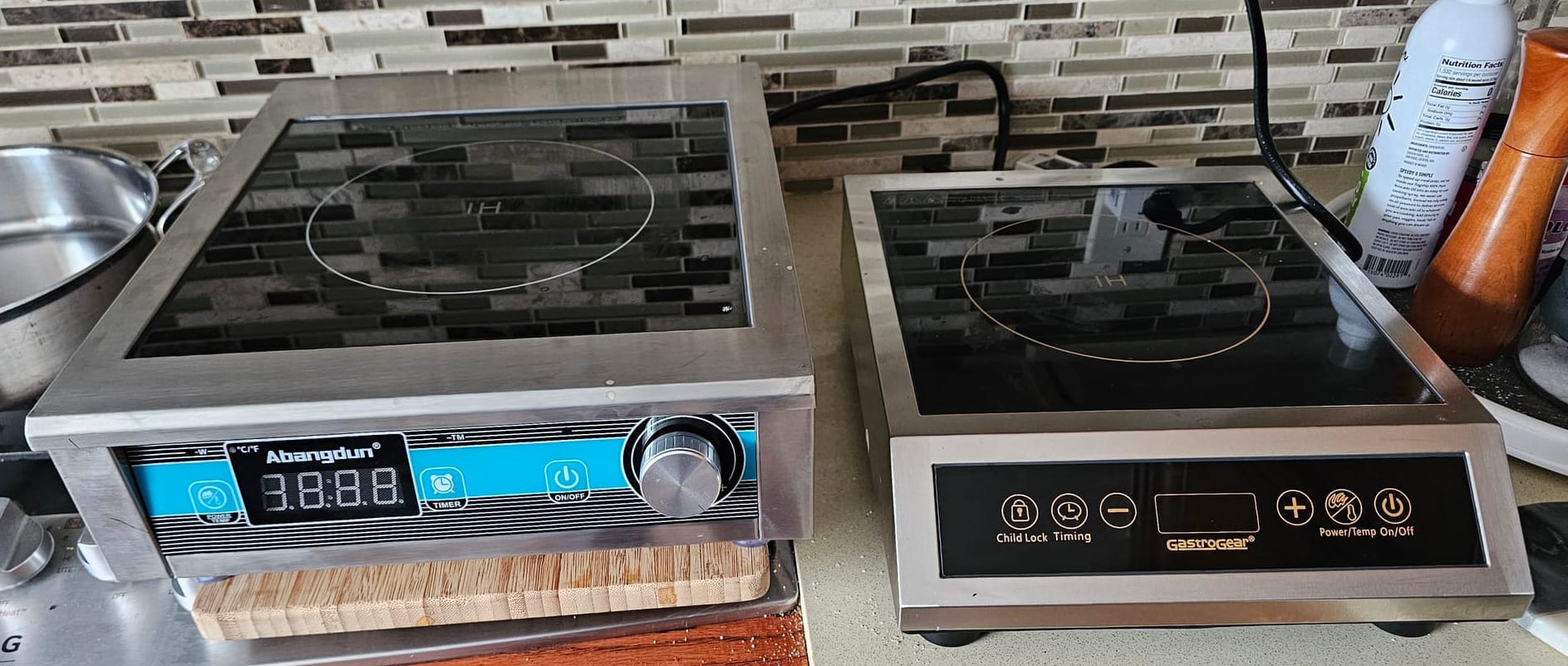
What’s actually “quick” is the review of this model – it’s virtually the same product but in upgraded packaging. The key differences in the “commercial grade” unit:
- Full metal external shell – can support more weight, has an overhang protecting the fans from the work surface, and mitigates the over torqued screws into the plastic bottom.
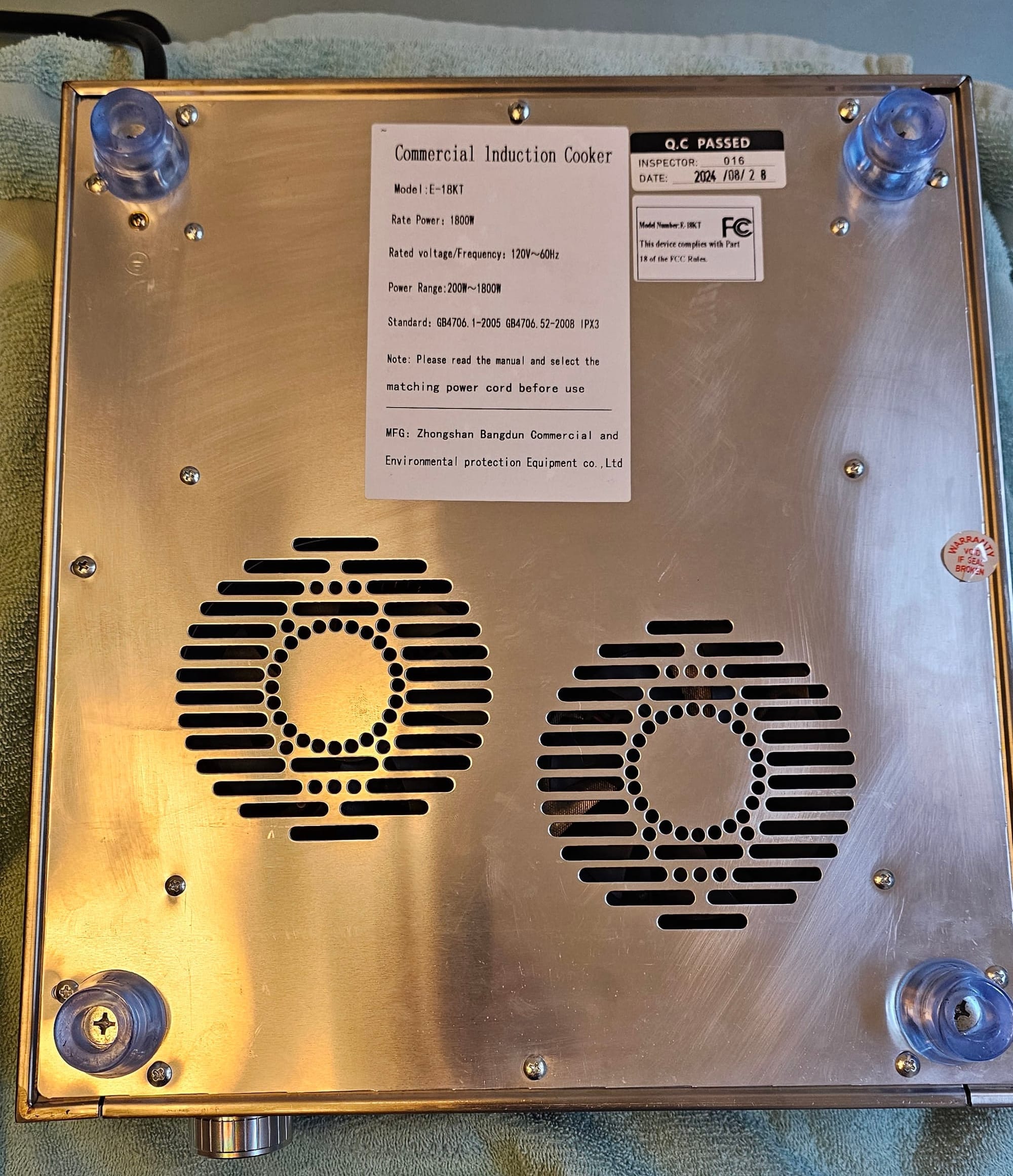
- Manual, rotating control knob instead of digital buttons (vastly improving the user experience – though the encoder could use some work).
- More accurate power output relative to display readings – it consistently drew the displayed wattage from the outlet.
- Significantly quieter fan operation.
- Still features an 8.25" coil (not 9") - suggesting this might be a physical limitation of the underlying design or a cost decision.
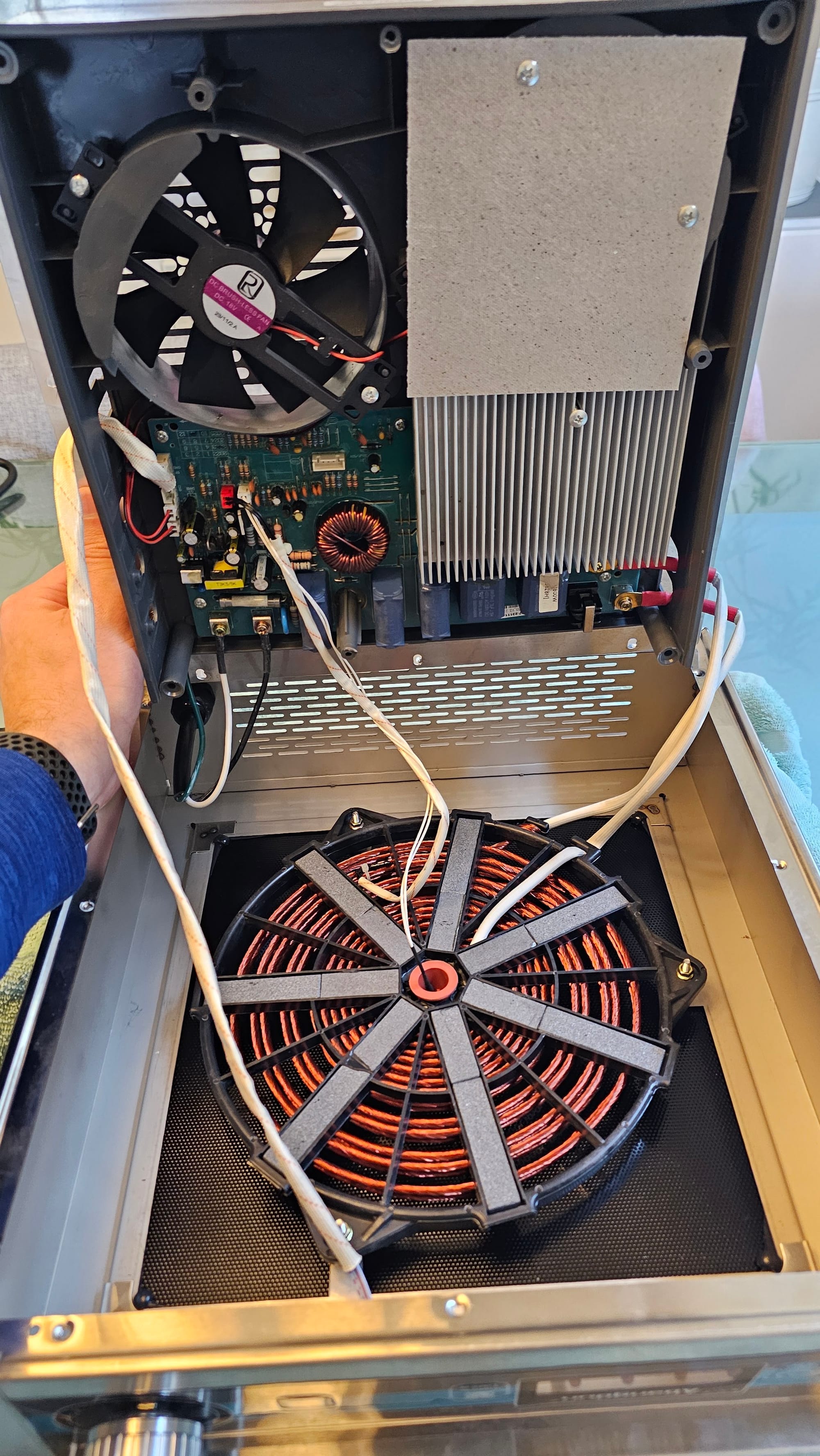
Conclusion: When good specs make bad products
This experience highlights an important lesson for kitchen tech enthusiasts: specifications only tell part of the story. A larger coil and higher wattage look impressive on paper, but implementation details like accurate temperature sensing, noise management, and quality control ultimately determine whether a product enhances or hinders your cooking experience. For those in the market for portable induction cooktops, I'd recommend focusing less on raw specifications and more on the overall engineering quality and user experience. Based on my testing across multiple units, the current sweet spot appears to be units with 8-8.25" coils that actually deliver on their power claims and maintain reasonable noise levels—even if they don’t differentiate in their marketing materials. The noticeable improvement in how quickly an induction cooktop can boil water occurs with MORE POWER (Grunt Grunt Grunt) like from a built-in cooktop connected to a 240V circuit – ah, we’ve come full circle.

So where does this leave us? After weeks of testing, disassembly, and enough button-tapping to develop a repetitive stress injury, I've learned that the portable induction cooktop market is a masterclass in managing expectations. The sweet spot isn't where the marketing claims it is - it's in that unglamorous middle ground where 8-inch coils meet honest power ratings and reasonable noise levels.
The "commercial grade" unit I ended up with isn't perfect, but it's good enough to make me actually use it. And that's the real test, isn't it? Not whether it hits every spec on paper, but whether it earns a permanent spot on your counter (or in my case, on a cutting board bridging my gas burners—a setup that would horrify any safety inspector but works beautifully).
Key takeaways for aspiring induction converts
- Coil size matters, but not as much as honest specifications: An accurately rated 8" coil beats a fictional 9" one
- Power ratings are suggestions: Verify actual draw with a meter if precision matters to you
- The interface can make or break the experience: Physical knobs > capacitive buttons when your hands are wet
- Noise is the hidden spec nobody talks about: Factor in both fan noise and electronic whine
- "Commercial grade" often just means "better build quality": Same internals, sturdier shell
- Temperature control on portable units is mostly theater: It's wattage control with extra steps


